

CarExpert.com.au
The CarExpert team's favourite cars of 2025
3 Days Ago
A new posture-controlling braking system and optional leather colour headline 2022's changes, yet the formula remains as vital as ever.
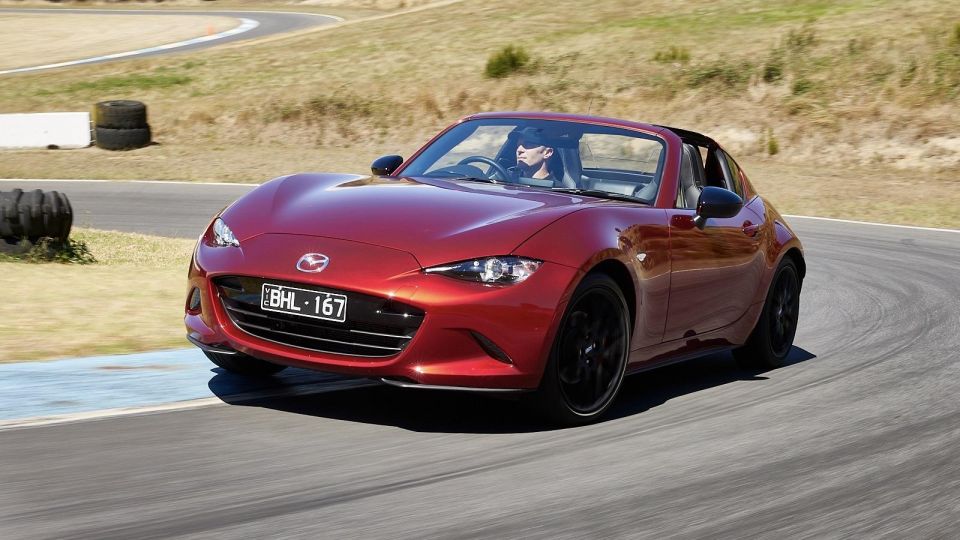
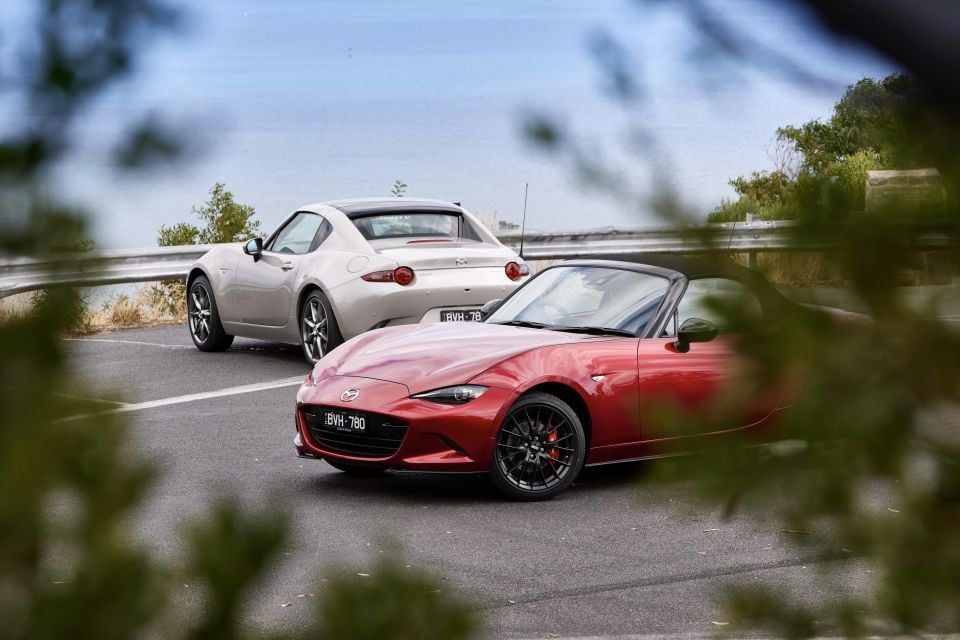

Quickly see how this car stacks up against its competition. Select any benchmark to see more details.
Where expert car reviews meet expert car buying – CarExpert gives you trusted advice, personalised service and real savings on your next new car.
Mazda has given its sporty halo car, the MX-5, some tweaks for 2022.
Slight changes, but they nevertheless put the spotlight back on one of the best budget sports cars around – sales of which grew 63 per cent last year, perhaps to Australians seeking kicks through cars in lieu of travel.
The headline is a new inside-rear-wheel braking system called Kinematic Posture Control, said to quell body roll in aggressive driving, improving the car’s posture and sharpening the tail-end a bit.
Other changes include a new Platinum Quartz paint, and a Terracotta leather trim option. Mazda has also dropped the slow-selling the 1.5-litre base engine option, effectively upping the price.
Minor, then. But not much new was required, since the fourth-generation MX-5 does what it sets out to do incredibly well. That mission boils down to two words: “be fun”. It’s still very much that.

It’s not as cheap as it was, given the opening price for the 1.5-litre in 2015 was $31,990 before on-road costs.
The entry point is now $37,790 before on-roads – up around 18 per cent – though the base car comes with more power and features today, of course.
There are three spec levels and two body types: the Roadster soft-top and RF folding hard-top, the latter of which Mazda expects to take around two-thirds of sales.
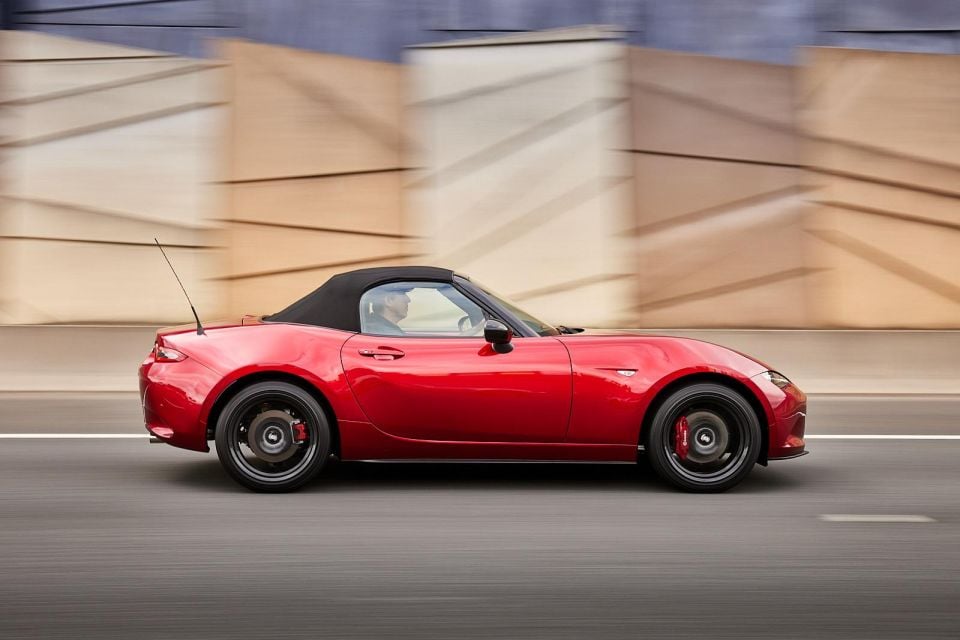
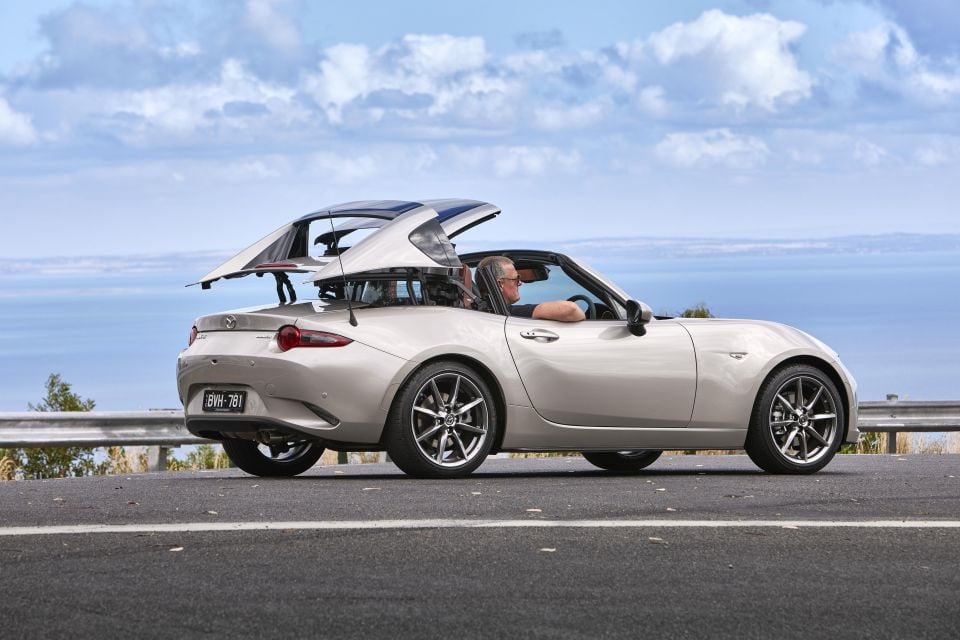
The pricing breakdown looks like this:
Soft-top Roadster
Hard-top RF
All prices listed are before on-road costs
The perception of MX-5 is that of a cheap car for enthusiasts, but it’s the $50,000-plus RF GT RS that is expected to account for the most sales – 41 per cent to be precise.
Mazda also expects 42 per cent of MX-5 buyers to go for the auto. Talk about demographic change…
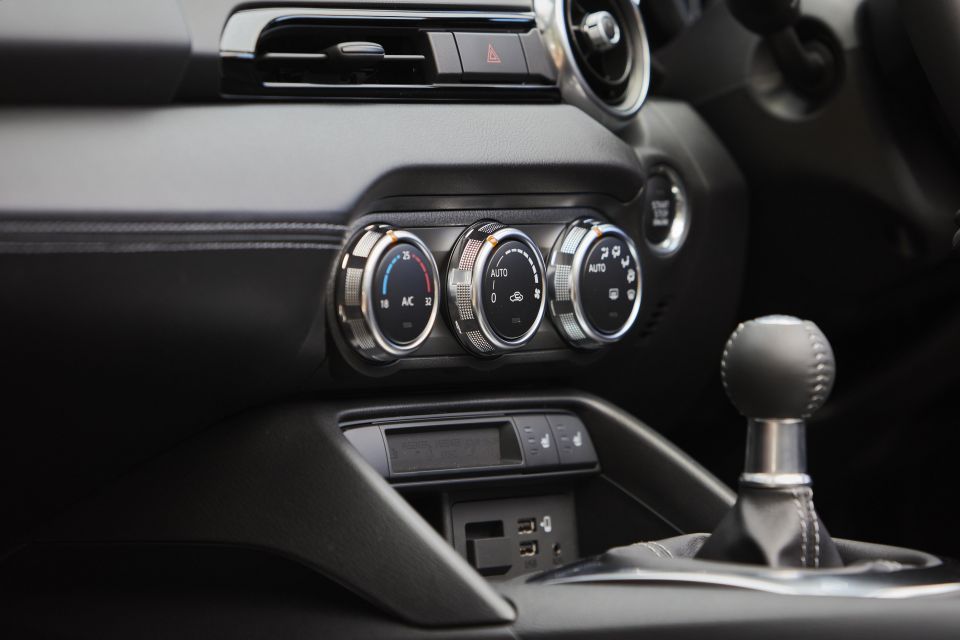
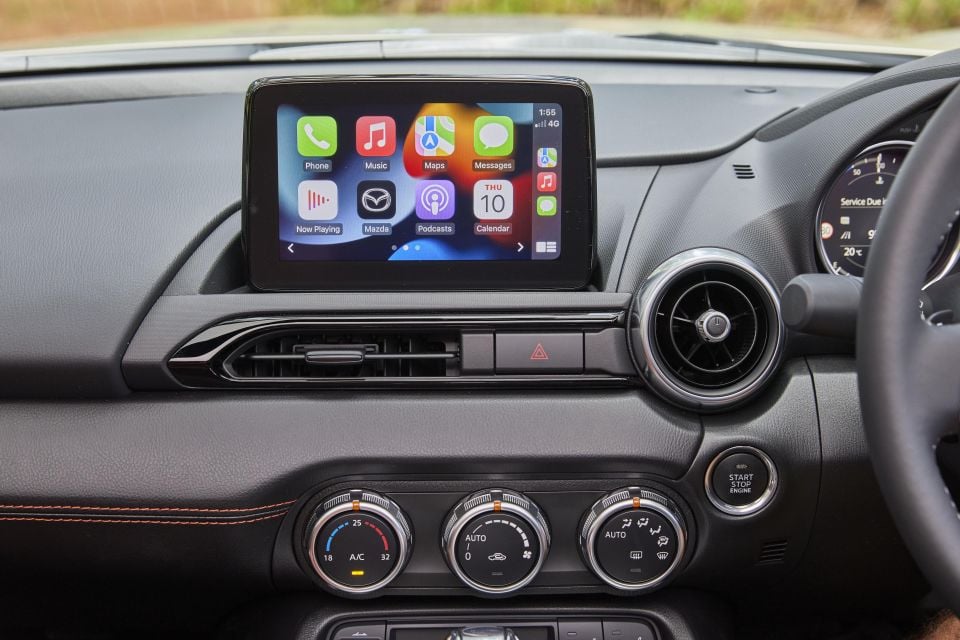
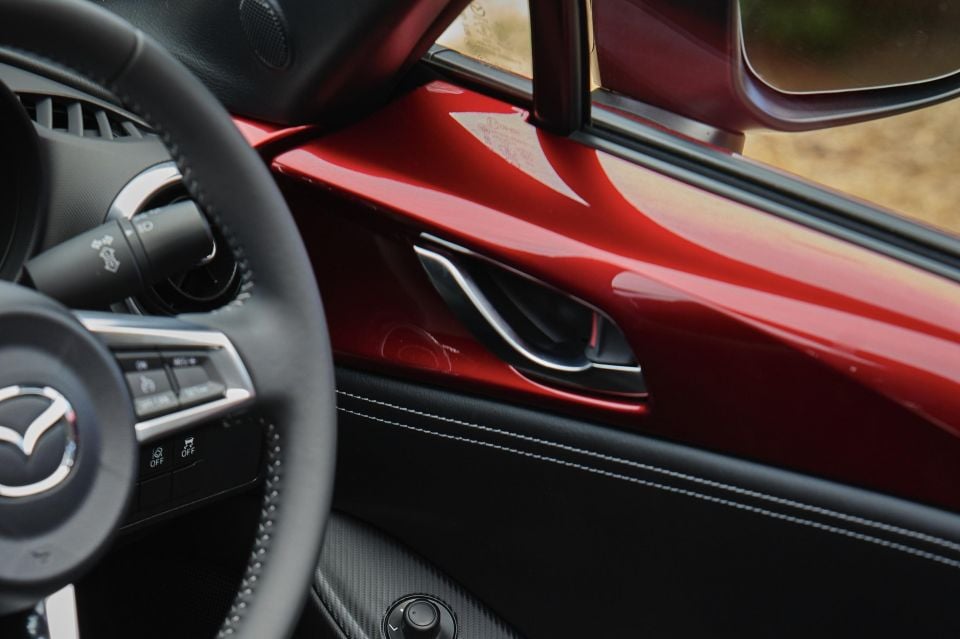

Buy your new car without the stress. It's fast, simple and completely free.

Great service from Travis and team, second time I have used this business would not hesitate to recommend them to anyone
Craig C.
Purchased a Ford Ranger in Sunshine Coast, QLD
CarExpert helped Craig save thousands on his Ford Ranger, now let us save you on your next new car.
Find a dealStandard equipment in the Roadster and RF includes:
The Roadster GT and RF GT gain:
The Roadster GT RS and RF GT RS gain:
Colour options include Snowflake White Pearl, Platinum Quartz Metallic, Soul Red Metallic ($495 extra), Deep Blue Crystal Mica, Machine Grey Metallic ($495 extra), Jet Black Mica, and Polymetal Grey Metallic ($495 extra).
The optional terracotta and white leather are only offered in the RF GT grade. RF GT models also have the option of a black-painted roof, which costs an additional $1020.
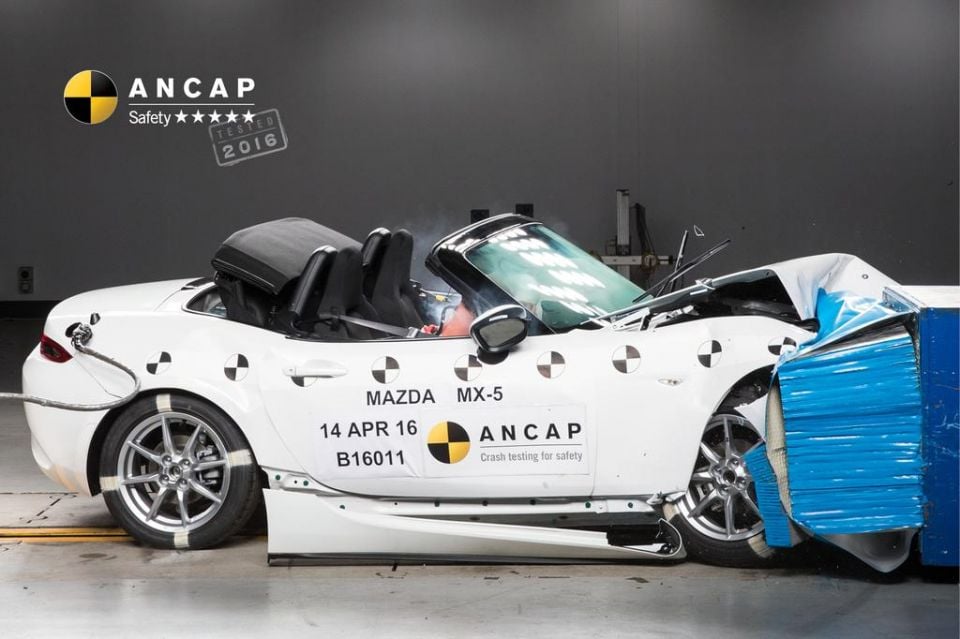
The 2022 Mazda MX-5 has a five-star safety rating from ANCAP, based on testing carried out in 2016. It scored 35.20 out of 37.
The entire 2022 MX-5 range comes with the following safety features:

Having recently spent time in the new Subaru BRZ, the Mazda’s MX-5’s interior quality and tactility of its switches, dials, knobs and levers all felt superior.
I also really like the coloured door inserts, new trim colours which I wish were available across the range, and almost total lack of piano black trim.
You drop right down into the seat, and while neither it nor the (perfectly sized, leather-wrapped) wheel have huge arrays of adjustability, I was able to get well-situated to attack some corners.
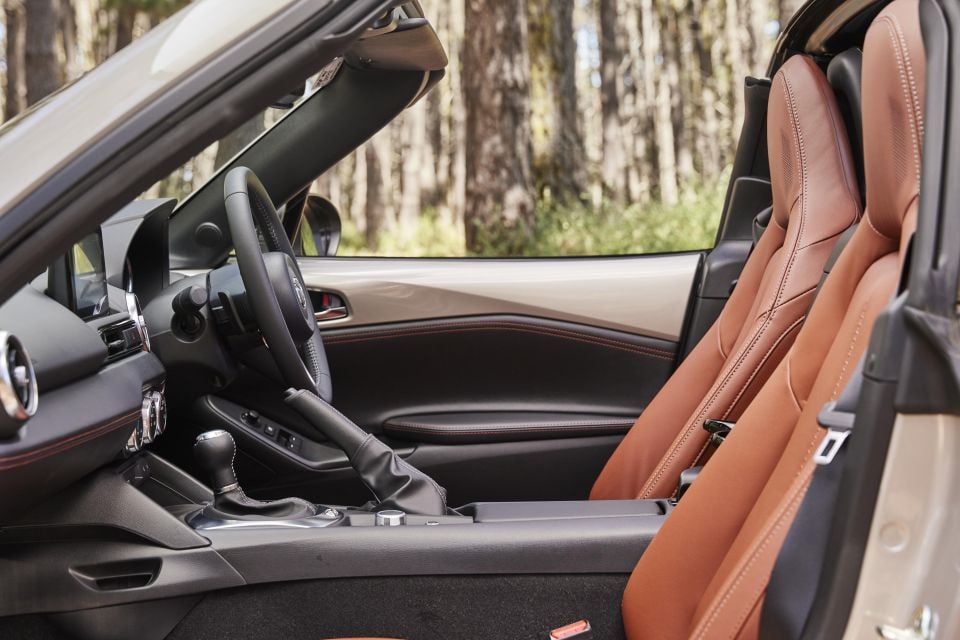
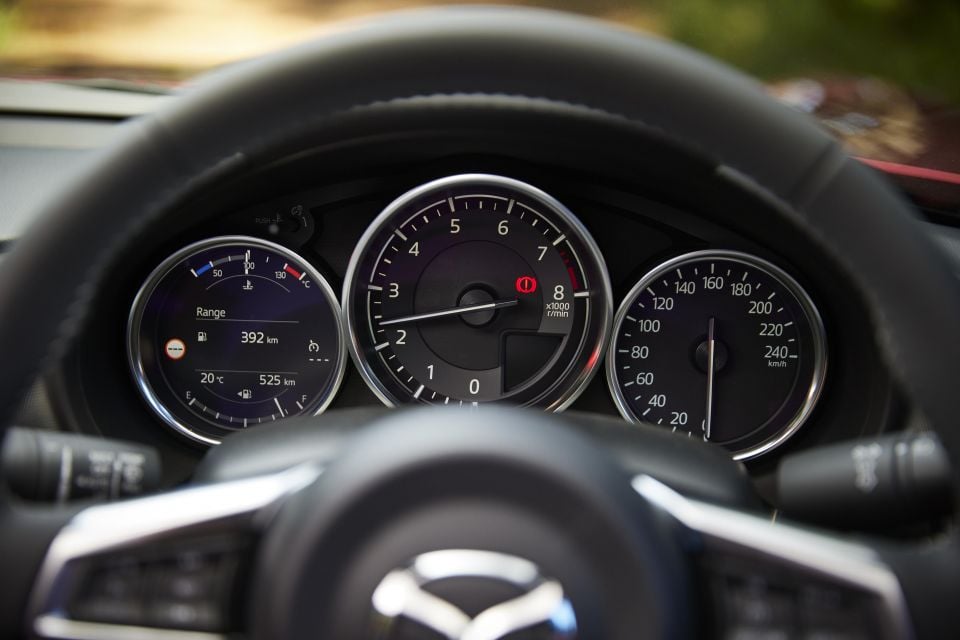
At 194cm, I’m at the absolute, absolute upper limit: my hair touches the roof when up, and my eyeline is partly interrupted by the top of the windscreen frame.
The analogue gauges – tachometer front and centre – are basic but suit the car’s vibe, however I’d love a legible digital speedo somewhere, since the speedo numbers are stacked.
The round vents, knurled dials for temperature controls, starter button near your left knee, manual handbrake and stubby little shifter are all immediately to your left, easy to reach.
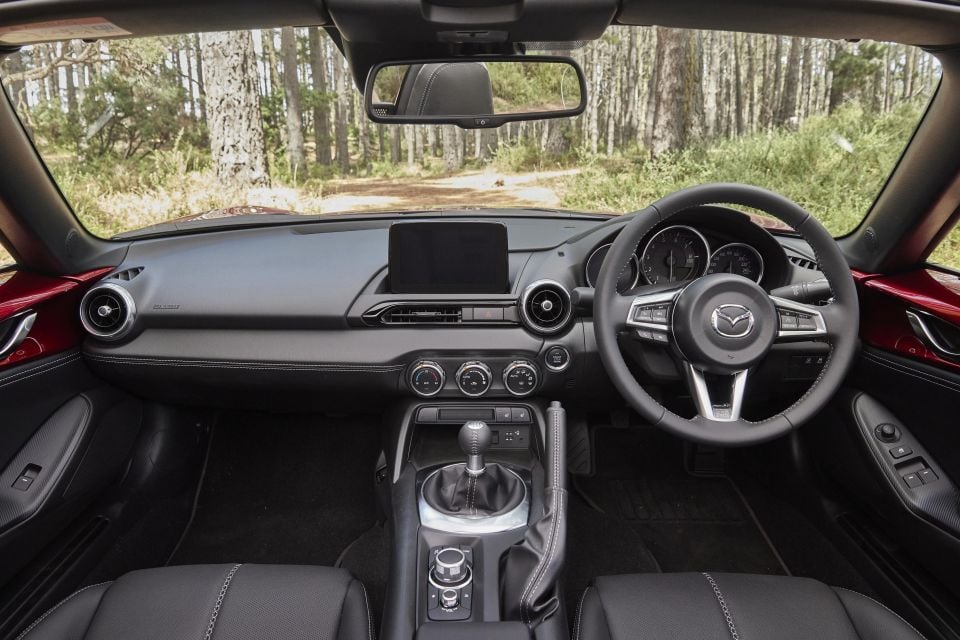
The touchscreen runs Mazda’s older infotainment system and its speed and interfaces feel dated, though with Apple CarPlay, Android Auto, and a camera it’s better than it once was.
You still have a little set of dials and buttons on the transmission tunnel as on-the-move shortcuts.
In terms of storage it’s pretty limited, since it’s strictly a two-seater with a 127-130L boot. There’s a little cubby behind your elbows, two cupholder frames you can take out when not in use, a small centre console, and a few other little hidey holes.
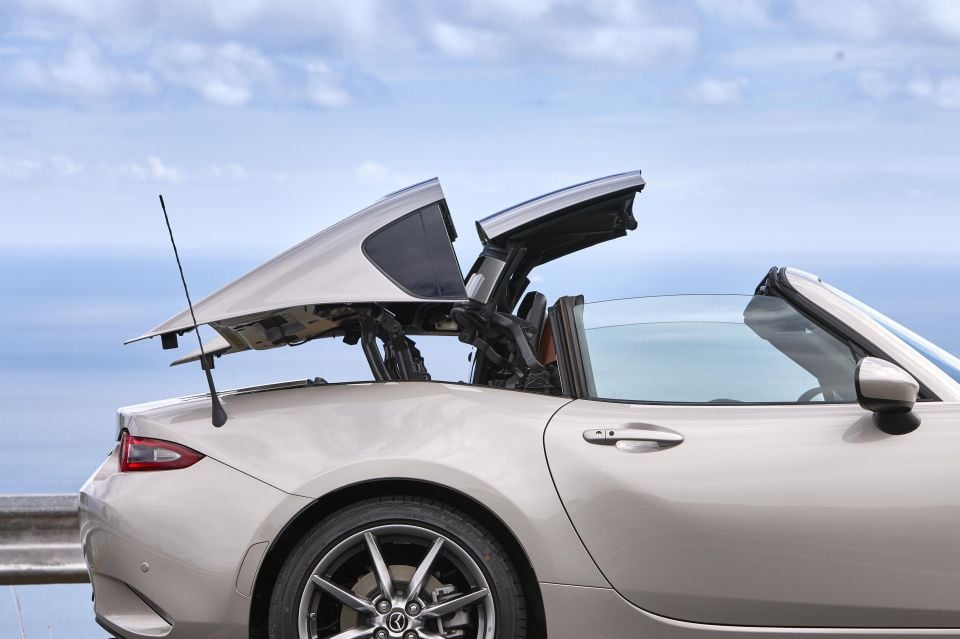
You’re ideally taking this car on a day trip, not a weekend getaway.
While the rapid, lightweight fabric roof would be my pick, it’s easy to see why the powered and rapidly-deploying hardtop RF is more popular, since it doesn’t impede much of space or weight, adds security, and arguably enhances the design.
It’s a fair price hike though: about $4000.

With the 1.5-litre gone, the sole drivetrain is the superior 2.0-litre four-cylinder naturally aspirated petrol producing 135kW at 7000rpm, and 205Nm at 4000rpm.
There’s no SkyActiv-X or mild-hybrid tech here, it’s an unchanged SkyActiv-G unit, though fittingly compared to other Mazda engines it’s more free-revving and has an easy-to-visit 7500rpm redline.
You don’t need much power because the MX-5 soft-top weighs between 1052kg and 1080kg, with the RF adding about 50kg.
Six-speed manual or six-speed torque converter automatic transmissions are offered, and all MX-5s are rear-wheel drive. Only the manuals get a limited-slip differential.
Claimed ADR fuel use is 6.8-7.2 litres of 95 RON per 100km and the tank is 45L. Even driving like a maniac on-circuit you’ll probably stay under 10.
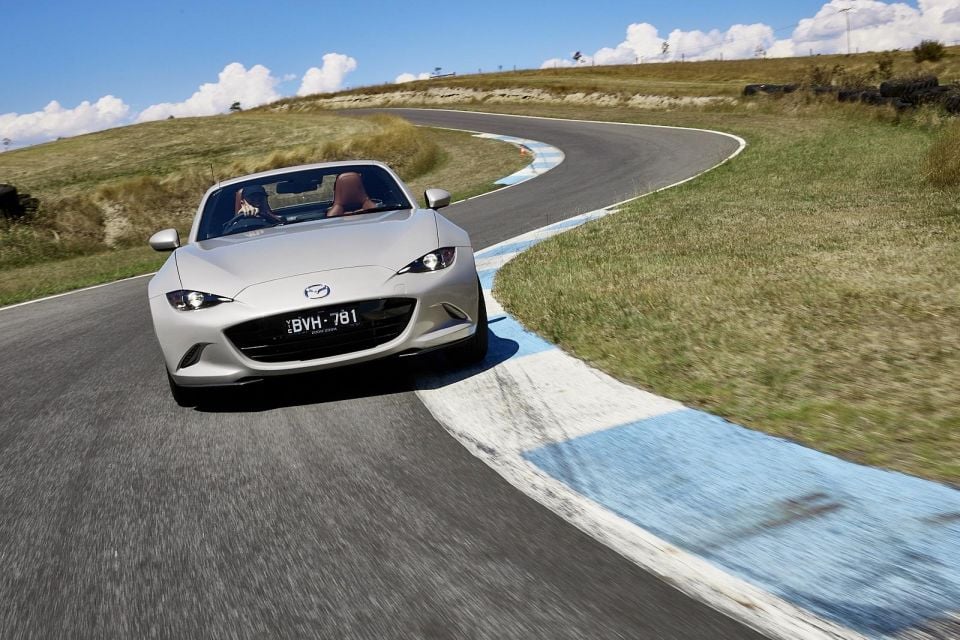
The Kinematic Posture Control system that’s new here taps into existing suspension, sensor and braking systems, and adds no weight.
When you’re cornering hard at high speeds, you don’t want body roll – something the ND MX-5 has always had, as a trade-off for a more involving experience and greater ride comfort.
KPC is there to reduce this roll by very lightly braking the inside-rear wheel at high-G moments, acting on the anti-squat suspension and stabilising the car’s posture.
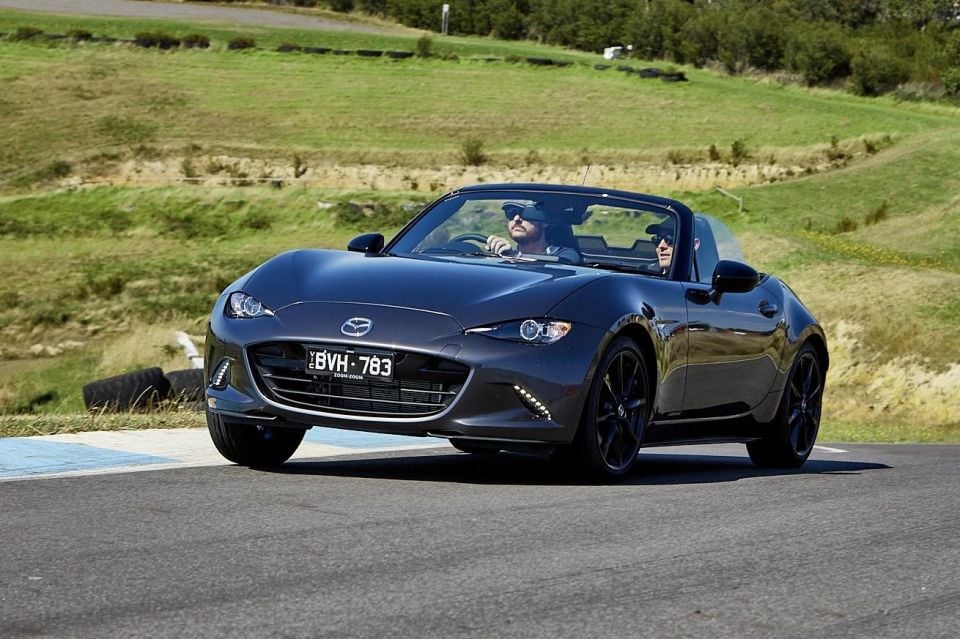
This makes it yet sharper and more controllable at the rear, giving you a bit more feel, and thereby giving you a tool to cut tenths from your laps and offer greater engagement.
Just like Mazda’s G-Vectoring system that uses engine timing to control the car’s chassis dynamics, this KPC is a clever touch that adds incremental enjoyment, with subtle execution.
Overall, the secret to the MX-5’s fun factor is how accessible its limits are, and how forgiving it is. That’s because its size and design makes you feel very connected – you drive it, it doesn’t drive you.
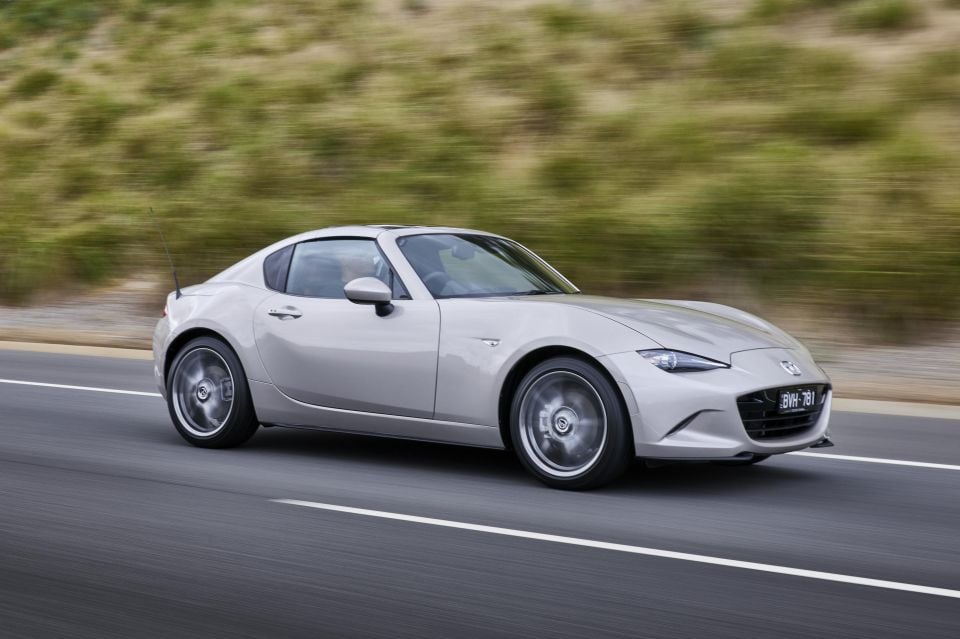
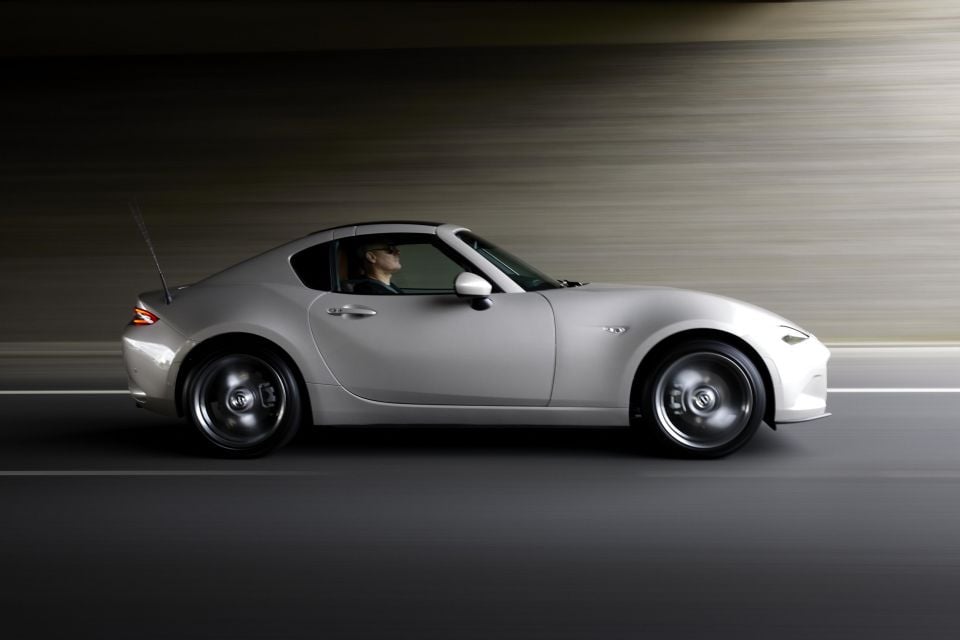
You sit super low so the feeling of speed is amplified, the gearstick is almost in your pocket, and the steering is well-weighted and direct.
The 2.0-litre engine is exactly the type of mill you want in a car like this: eager for revs, instantly responsive to throttle blips, crisp and raspy in terms of soundtrack. It won’t win any drag-strip challenge, but who seriously cares?
The six-speed manual has a mechanical feel and close-knit pattern, with a well-weighted clutch. Even I can heel-toe in this, and I’m not any kind of track day hero.
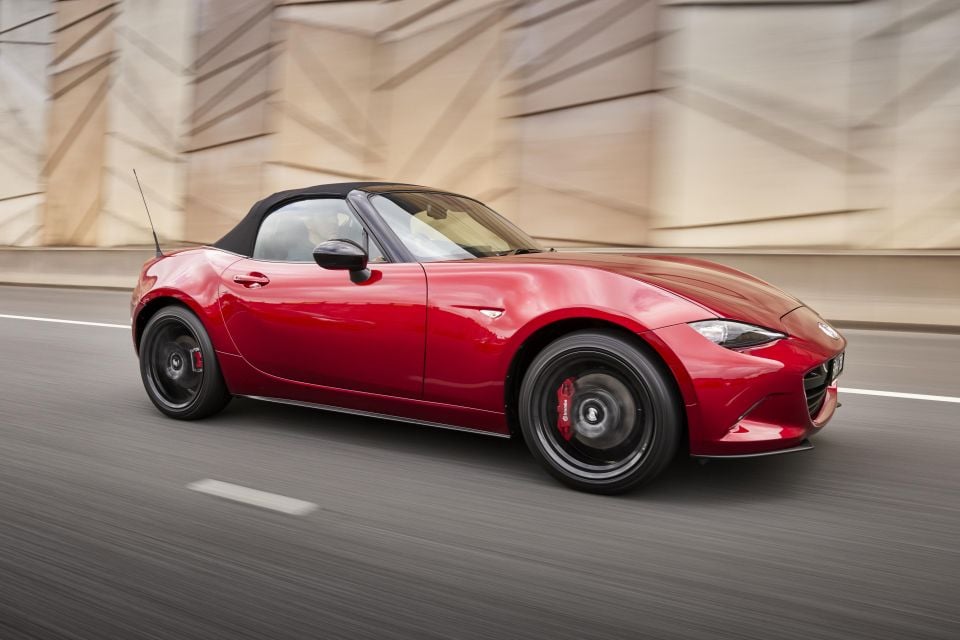
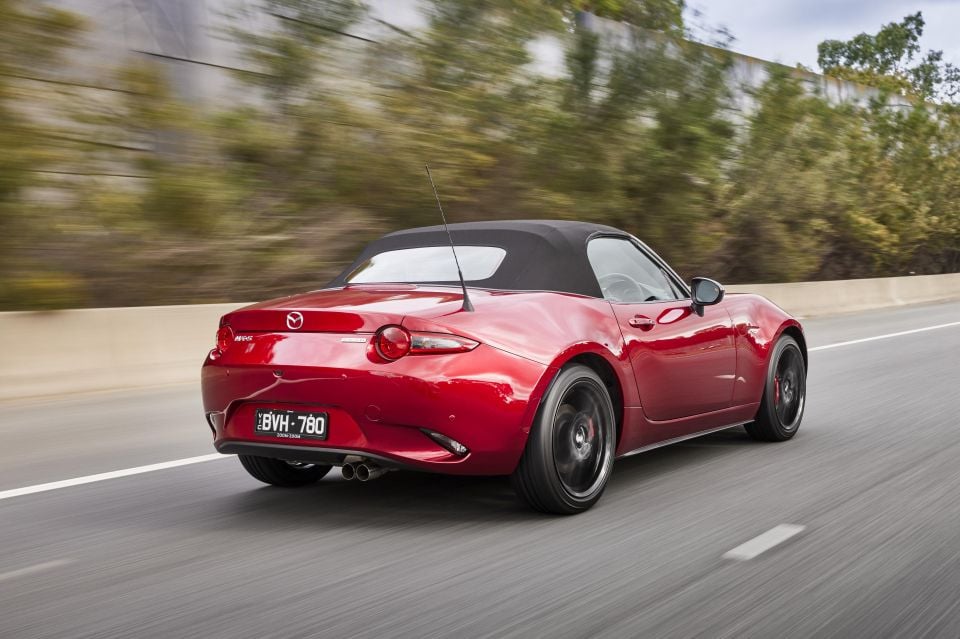
Where expert car reviews meet expert car buying – CarExpert gives you trusted advice, personalised service and real savings on your next new car.
The auto? It has paddles, and in sports setting doesn’t strangle the engine at all. But in terms of driver engagement you can’t beat three pedals.
A few laps of Haunted Hills reminded me just how fun this fourth-generation MX-5 can be, in fact. Where powerful cars can be a handful, driving the Mazda is a matter of keeping up momentum and celebrating your relative lack of pace – because you’re so plugged into the moment.
You can pin the throttle without stressing that you’ll carry too much velocity into the next sequence, and so long as you keep your momentum up and your brake applications and releases are smooth, you’ll find yourself having an absolute blast.
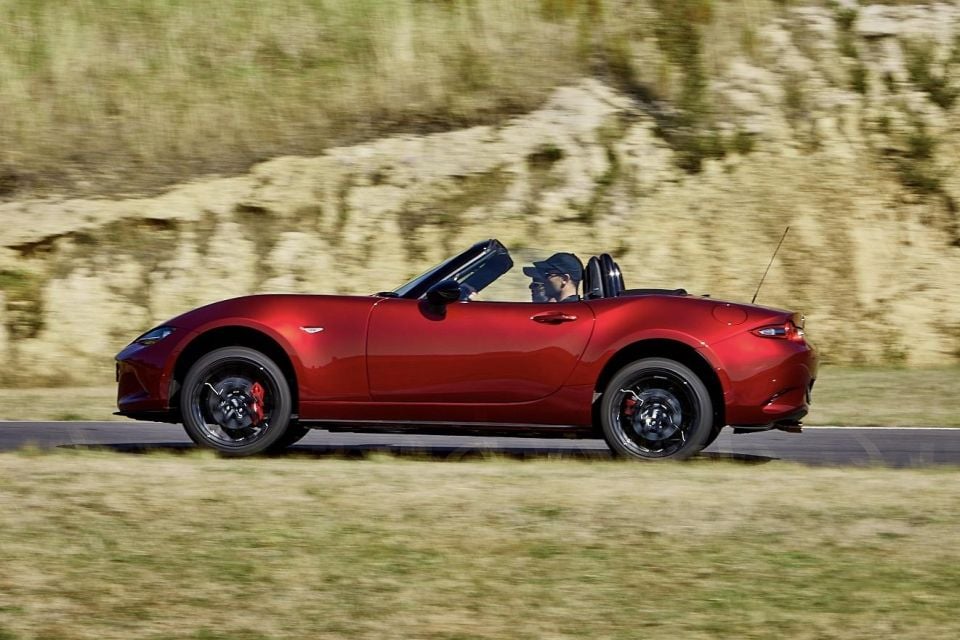
It’s never stiff, with some roll (reduced now, meaning the rear comes into line quicker) to maximise engagement, and the tail is always just that little bit squirrelly when you want it to be.
There aren’t many cars as happy to dip into a controlled drift, so long as you keep that throttle pinned!
The real MVP for me is the MX-5 GT RS introduced in December 2020, which adds upgraded and lighter Brembo brake calipers, new pads, lighter forged alloys from BBS, more track-suited damping, and a solid alloy strut tower brace up front. All for $3000 more.
Meantime in day-to-day driving the MX-5’s light weight, soft-ish tune (unimpeded by the KPC) and tiny dimensions make it eminently liveable: although tyre and wind noise levels are high.
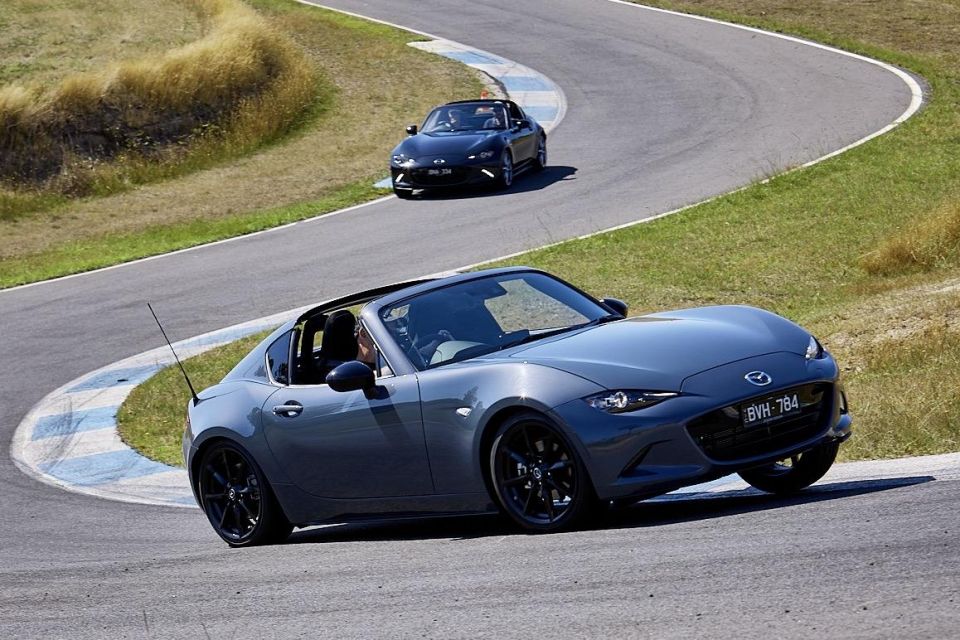
Mazda Australia provides a five-year and unlimited kilometre warranty.
Servicing costs and intervals as below:
Every two years or 40,000km there’s $101 for new brake fluid, too.

In a world of the more powerful gen-two Subaru BRZ/Toyota 86, and myriad mega turbo hot hatches like the GR Yaris and i20 N, the Mazda retains a charm of its own.
The MX-5 remains about as pure and stripped-back as new cars get, maximising driver engagement and fun-factor at all costs. And you can whip the top off, any time you like.
Ain’t broke, no need to fix.
MORE: Everything Mazda MX-5
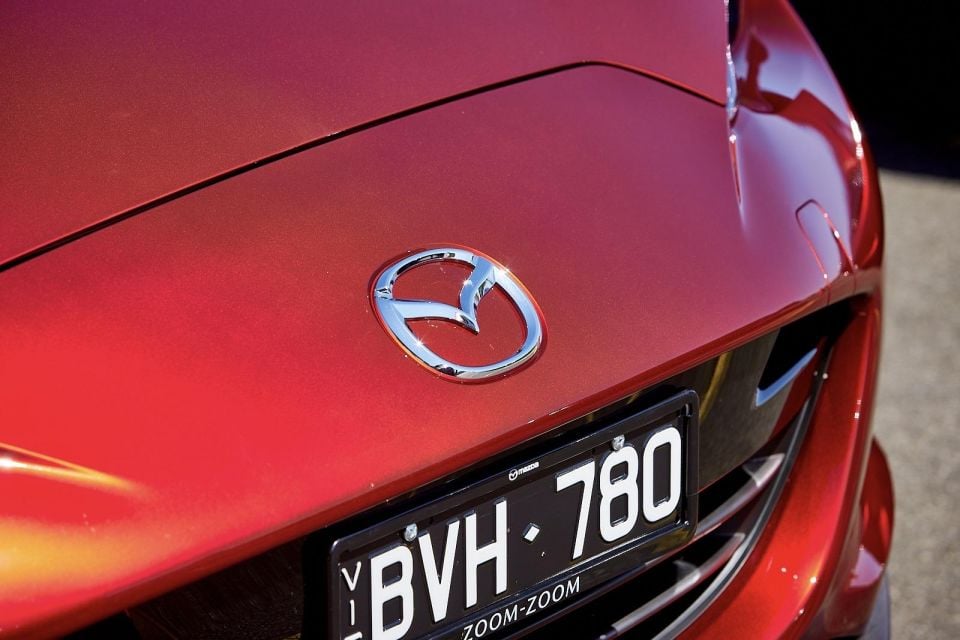
Where expert car reviews meet expert car buying – CarExpert gives you trusted advice, personalised service and real savings on your next new car.


CarExpert.com.au
3 Days Ago


Derek Fung
7 Days Ago
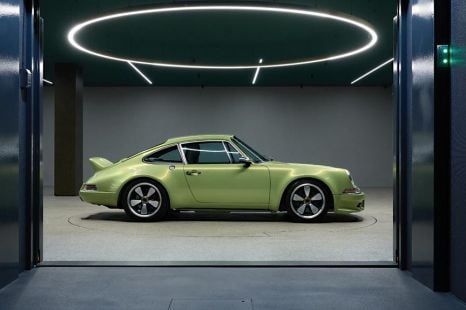

Marton Pettendy
23 Days Ago
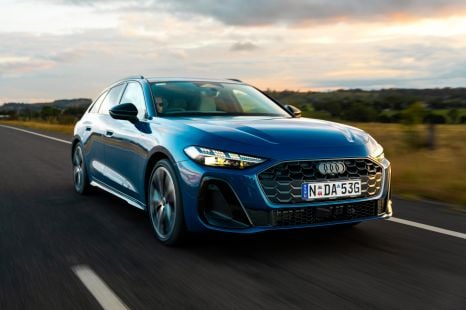

James Wong
1 Month Ago
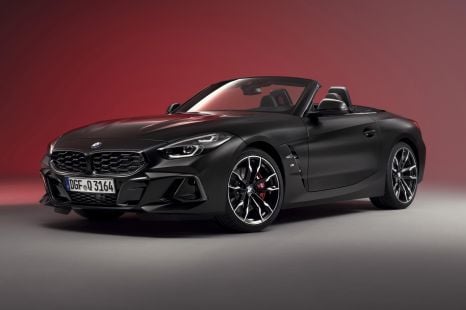

Damion Smy
1 Month Ago
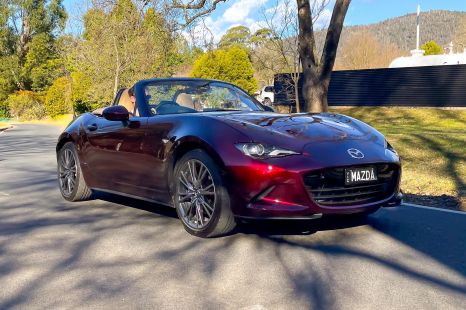

Josh Nevett
1 Month Ago